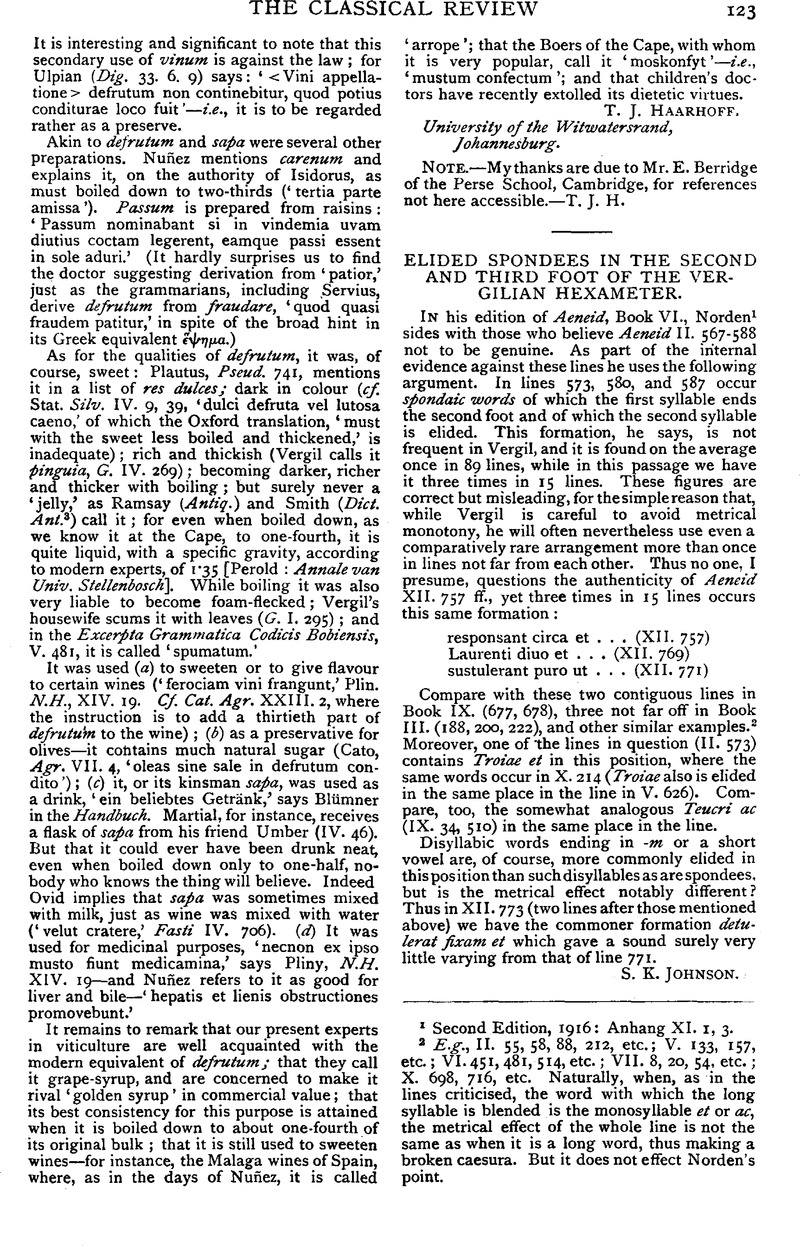No CrossRef data available.
Article contents
Elided Spondees in the Second and Third Foot of the Vergilian Hexameter
Published online by Cambridge University Press: 27 October 2009
Abstract

- Type
- Review Article
- Information
- Copyright
- Copyright © The Classical Association 1927
References
page 123 note 1 Second Edition, 1916: Anhang XI. 1, 3.
page 123 note 2 E.g., II. 55, 58, 88, 212, etc.; V. 153, 157, etc.; VI. 451, 481, 514, etc.; VII. 8, 20, 54, etc.; X. 698, 716, etc. Naturally, when, as in the lines criticised, the word with which the long syllable is blended is the monosyllable et or ac, the metrical effect of the whole line is not the same as when it is a long word, thus making a broken caesura. But it does not effect Norden's point.




